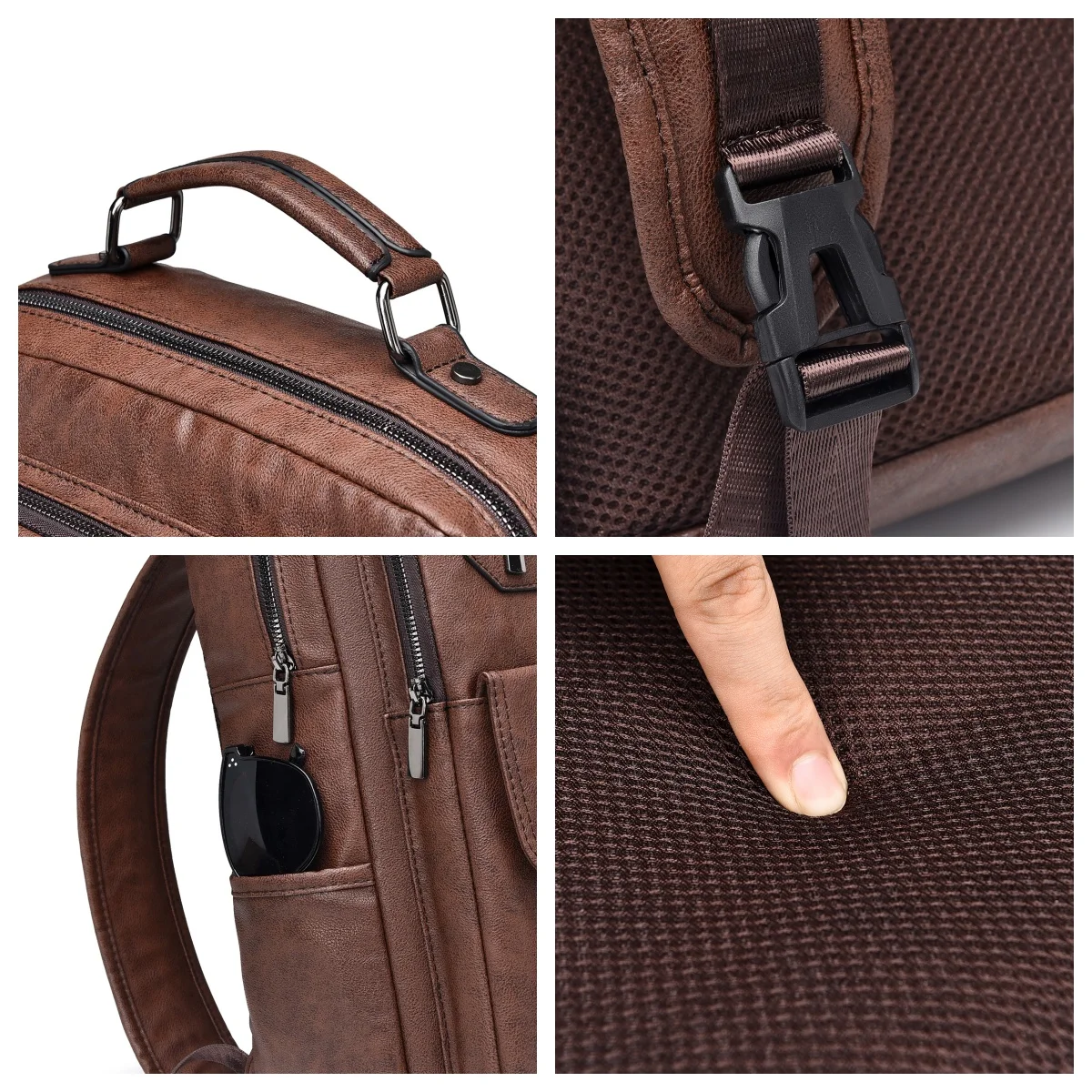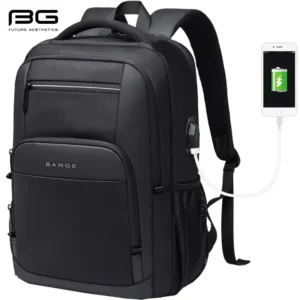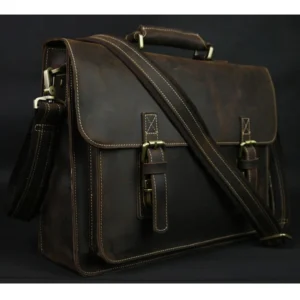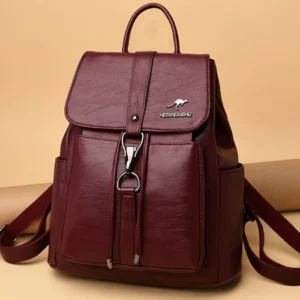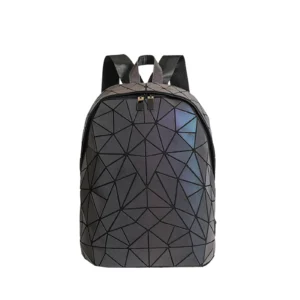Introduction
A sturdy leather backpack is more than just a bag—it’s a companion crafted to withstand the test of time. Made from full-grain or top-grain leather, these premium carriers represent the highest quality available, featuring natural markings and a robust structure that becomes uniquely yours through years of use.
Quality leather backpacks strike an exceptional balance between functionality, timeless aesthetics, and remarkable longevity. Unlike their synthetic counterparts, these bags don’t simply serve a temporary purpose—they become more distinguished with age while continuing to protect your belongings with uncompromising reliability.
The traditional leatherworking techniques used in crafting these backpacks combine with modern design sensibilities to create something truly special. The natural properties of high-quality leather—its fiber strength, flexibility, and natural oils—contribute to a product that doesn’t just survive daily use but thrives on it.
When considering durable leather backpacks for commuters, you’re not merely purchasing a product but making an investment that will serve you faithfully for decades. The initial cost may be higher, but the lasting value makes these backpacks among the wisest accessories you can add to your collection. Full-grain leather backpacks particularly stand out for their exceptional durability and character development over time.
Unmatched Durability: Why Leather Outlasts Other Materials
The superior durability of leather backpacks comes directly from the material’s unique molecular structure. Unlike synthetic fabrics that rely on man-made fibers, leather consists of tightly intertwined natural collagen fibers that create incredible tensile strength. This natural architecture makes leather inherently resistant to tears, punctures, and the daily abrasion that quickly wears down other materials.
Quality leather backpacks commonly outlast their synthetic counterparts by decades rather than years. While a typical synthetic backpack might need replacement within 1-3 years of regular use, a well-made leather backpack can faithfully serve its owner for 20+ years—often becoming a cherished heirloom.
What makes leather backpacks particularly durable:
- Reinforced stress points that prevent common failure areas like strap connections and bottom corners
- Natural resilience that allows the material to withstand up to 22 pounds (10 kg) without compromising structural integrity
- Properly tanned leather that maintains flexibility while resisting cracking and tearing
- Quality stitching that reinforces rather than weakens the material
Learning about proper durable leather backpack care tips can further extend this impressive lifespan. With minimal maintenance, leather doesn’t just survive—it evolves beautifully over time, developing the rich character that makes each bag unique to its owner.
The Beauty of Patina: Aging with Distinguished Character
Unlike synthetic materials that simply fade and deteriorate with age, quality leather undergoes a remarkable transformation. This natural aging process, known as developing a patina, actually enhances the backpack’s appearance over time. The leather gradually deepens in color, develops a rich luster, and takes on subtle marks that tell the story of your journeys together.
The patina process happens naturally as oils from your hands, sunlight exposure, and general use interact with the leather’s natural properties. What begins as a uniform surface gradually transforms into something with depth, character, and unmistakable individuality. Each scratch, mark, and subtle color variation becomes part of a visual history that belongs only to your backpack.
This graceful aging process means your leather backpack looks better after years of use than when you first purchased it—a claim few other materials can make. The rich honey or mahogany tones that develop in properly aged leather create a sophisticated aesthetic that synthetic materials simply cannot replicate.
For those particularly interested in this appealing characteristic, vintage leather backpacks showcase the beautiful potential of properly aged leather. This natural evolution represents not just aesthetic appeal, but genuine added value over time—the backpack you buy today will become more distinguished and unique with each passing year.
Superior Investment Value: Cost Per Use Analysis
When evaluating the true cost of any purchase, the “cost per use” calculation reveals the actual value much more accurately than the initial price tag. While a quality leather backpack might require a larger upfront investment, its exceptional longevity drastically reduces its true cost over time.
Consider this practical comparison:
| Backpack Type | Initial Cost | Expected Lifespan | Replacement Frequency | Total 10-Year Cost | Cost Per Year |
|---|---|---|---|---|---|
| Quality Leather | $250-400 | 10-20+ years | None needed | $250-400 | $25-40 |
| Synthetic | $50-120 | 1-3 years | 3-10 replacements | $150-1,200 | $15-120 |
The figures clearly demonstrate the “buy once, cry once” philosophy. While the initial investment might seem steep, the need to regularly replace lower-quality alternatives quickly erases any initial savings. Additionally, quality leather backpacks often retain significant resale value should you ever choose to part with yours—something rarely true of synthetic alternatives.
This investment approach also aligns perfectly with benefits of choosing sustainable leather backpacks. By purchasing one quality item that lasts for decades instead of multiple disposable alternatives, you reduce waste, resource consumption, and your overall environmental footprint.
Exceptional Protection for Valuables: Security Through Quality
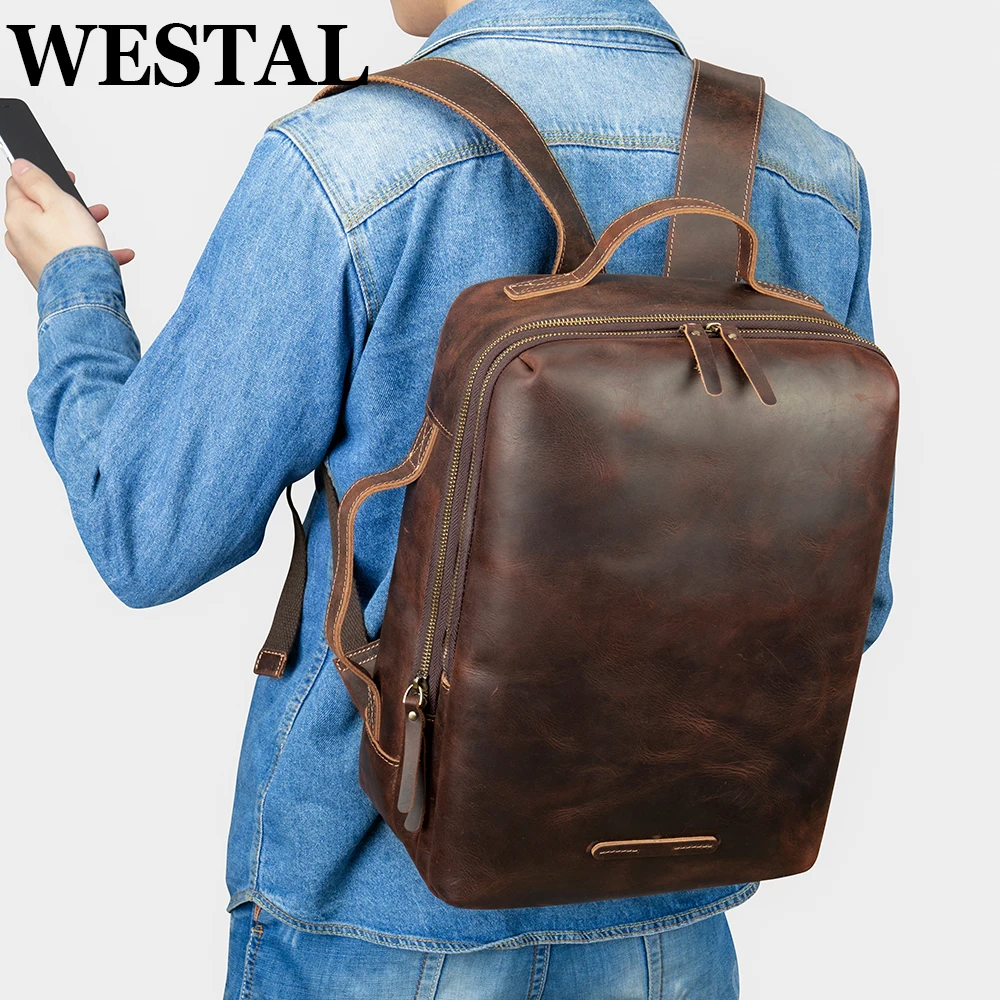
The natural thickness and resilience of quality leather—typically 0.08-0.12 inches (2-3 mm)—creates an excellent protective barrier for your valuable possessions. This material density provides superior impact protection compared to the thin fabrics used in most synthetic backpacks, helping to cushion electronics and other fragile items from bumps and drops.
Quality leather backpacks also offer structural stability that maintains their shape even when partially empty. This prevents items from shifting and potentially becoming damaged during transport. The natural properties of leather provide additional protection:
- Natural water resistance that shields contents from light rain and moisture
- Dust-repelling surface that keeps particles from reaching sensitive electronics
- Temperature-regulating properties that help insulate contents from extreme heat or cold
Premium leather backpacks typically feature additional security elements that enhance protection, including reinforced straps, quality metal zippers that resist breaking, and thoughtfully designed hidden pockets for valuables. Leather laptop backpacks particularly excel at providing dedicated, padded compartments specifically designed to protect electronic devices from impacts and environmental factors.
All these protective qualities combine to ensure your valuable possessions remain safe and secure, regardless of your daily adventures or commuting challenges.
Ergonomic Comfort: Designed for Daily Carry
Despite their sturdy construction, quality leather backpacks are designed with remarkable comfort in mind. Well-crafted leather backpacks distribute weight evenly across your back and shoulders, preventing the strain and fatigue associated with poorly designed bags.
What makes leather backpacks particularly comfortable for daily use:
- The material naturally molds to your body over time, creating a customized fit
- Quality designs feature padded straps and back panels that prevent pressure points
- Proper weight distribution supports comfortable carrying capacity of 15-25 pounds (7-11 kg)
- The balanced structure prevents the bag from sagging or pulling awkwardly
Unlike stiff synthetic materials that maintain their original shape regardless of use, leather gradually adapts to your unique carrying style and posture. This personalization process creates a backpack that feels increasingly comfortable with regular use.
For those who need a reliable everyday companion, leather backpacks for daily use provide the perfect balance of structure and comfort. The thoughtful ergonomics allow you to carry everything you need without the physical toll often associated with lesser bags, making them ideal for commuting, travel, or any daily adventure.
Unparalleled Versatility: From Boardroom to Weekend Adventures
Few accessories transition as seamlessly between diverse environments as a quality leather backpack. This remarkable versatility eliminates the need for multiple specialized bags, allowing one thoughtfully designed backpack to serve virtually all your carrying needs.
The timeless aesthetic of leather works equally well in professional settings and casual environments. The same backpack that looks perfectly appropriate in an important client meeting can accompany you on weekend adventures without missing a beat. This versatility extends to functionality as well, with thoughtful organizational features:
- Laptop sleeves and document compartments for work essentials
- Quick-access pockets for everyday items like phones and transit cards
- Main compartments sized perfectly for clothing and personal items during travel
- External attachment points for additional items when needed
Knowing what size backpack is best for commuting can help you select the perfect dimensions for your specific needs. Most versatile leather backpacks range from 16-22 inches (40-55 cm) in height, offering ample space without becoming unwieldy.
This remarkable adaptability means your leather backpack becomes a constant companion across all life’s scenarios—elegant enough for professional settings yet durable enough for outdoor adventures.
Natural Weather Resistance: Protection from the Elements
Quality leather possesses inherent weather-resistant properties that provide significant protection against environmental challenges. The dense fiber structure and natural oils in leather create a barrier that effectively repels light rain and moisture, keeping your belongings dry in unexpected weather.
Unlike many synthetic materials that become permanently damaged after exposure to elements, properly treated leather can recover from occasional moisture exposure without lasting damage. This resilience comes from leather’s natural properties rather than artificial coatings that wear off over time.
Leather also handles temperature variations remarkably well, maintaining flexibility in cold conditions while remaining comfortable to touch even in warmer weather. This natural adaptability makes leather backpacks suitable for year-round use in various climates.
Regular conditioning enhances this natural weather resistance by replenishing the oils that create the protective barrier. For travelers particularly concerned about weather protection, men’s leather travel backpacks often feature additional weather-resistant treatments and design elements that further enhance their ability to withstand diverse conditions.
While not completely waterproof without additional treatment, quality leather’s natural water resistance provides more than adequate protection for most everyday situations, handling light rain and brief exposure to elements with ease.
Exceptional Craftsmanship: The Mark of Quality
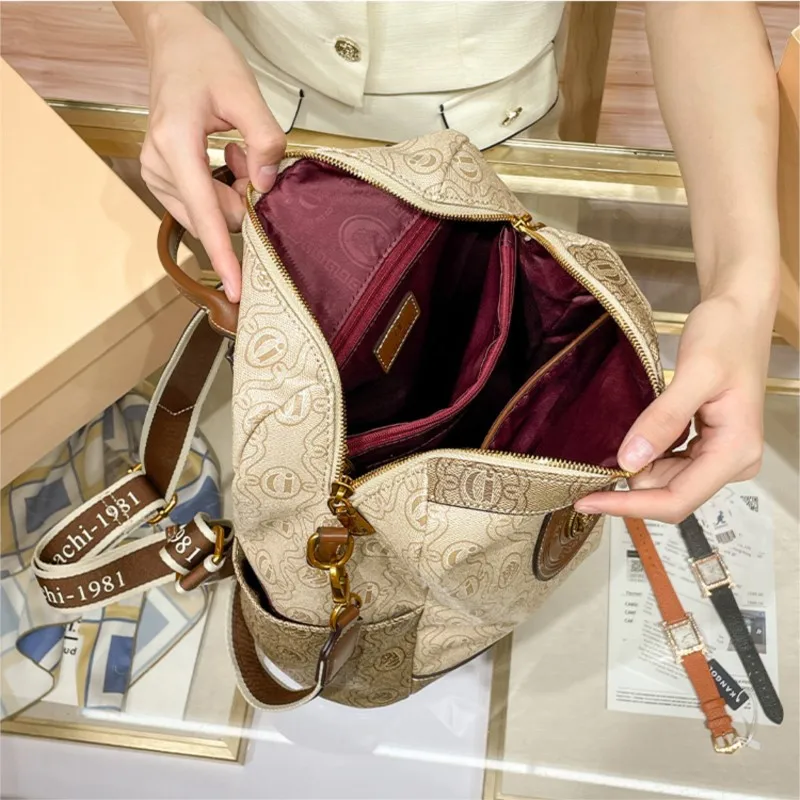
The exceptional durability and functionality of leather backpacks stem directly from superior craftsmanship. Quality leather goods display distinctive hallmarks that signal their exceptional construction:
- Reinforced saddle stitching that remains intact even if individual stitches break
- Edge finishing techniques that prevent fraying and maintain structural integrity
- Seamless integration between leather panels for maximum strength
- Premium hardware components like YKK zippers and solid brass or stainless steel fixtures
- Reinforced stress points at strap connections and corners
The difference between machine-made and handcrafted leather goods becomes evident in these details. While mass-produced options might look similar at first glance, handcrafted leather backpacks feature meticulous attention to structural elements that dramatically impact longevity.
Understanding how to choose a rugged leather backpack helps you identify these important quality indicators. The craftsmanship invested in a premium leather backpack doesn’t just affect its appearance—it fundamentally determines how the bag performs over decades of use.
This dedication to quality construction creates a backpack that not only withstands daily challenges but improves with age and use, embodying the true meaning of craftsmanship in an age of disposable products.
Sustainable Choice: Environmental Benefits of Lasting Quality
Choosing a quality leather backpack represents a meaningful step toward more sustainable consumption habits. The exceptional longevity of leather goods directly translates to reduced resource consumption and waste generation over time. By purchasing one quality item that lasts for decades instead of multiple disposable alternatives, you significantly decrease your environmental footprint.
Quality leather offers environmental advantages over synthetic alternatives:
- As a natural material, properly tanned leather biodegrades in 25-50 years compared to 500+ years for many synthetic materials
- The “buy for life” approach reduces packaging waste from frequent replacements
- Quality leather goods require fewer resources over time despite higher initial material requirements
- Vegetable tanning methods offer more environmentally responsible processing options
These sustainability benefits align perfectly with the growing “slow fashion” movement, which emphasizes quality over quantity and mindful consumption over disposability. Information about ethically sourced leather backpack materials can help you make choices that align with both quality and environmental values.
By investing in lasting quality, you’re not just making a practical choice for yourself—you’re contributing to a more sustainable approach to consumption that values craftsmanship, durability, and reduced waste.
How to Identify a Truly Sturdy Leather Backpack: Quality Indicators
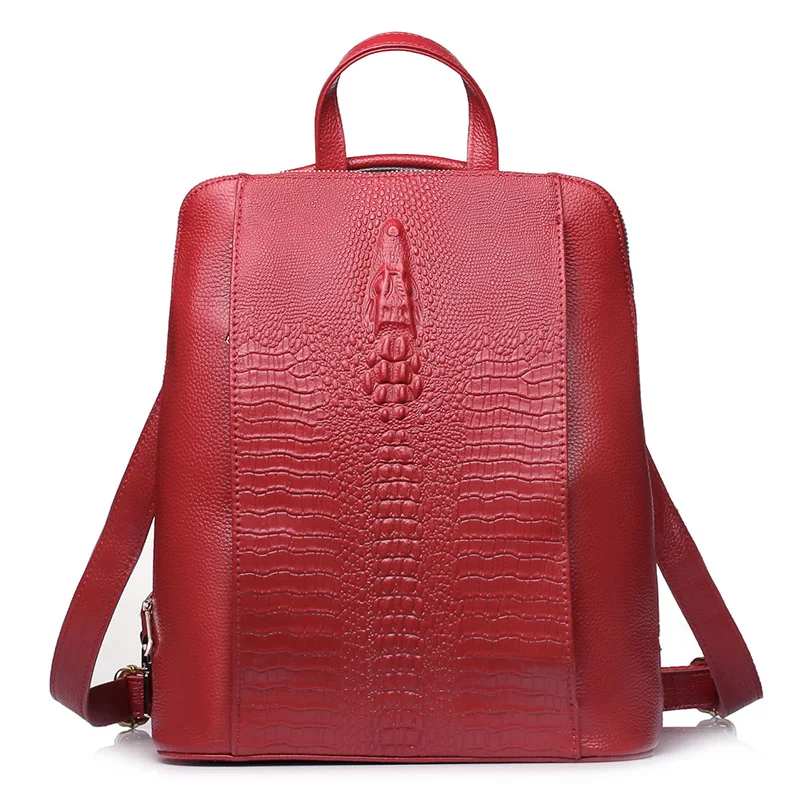
Not all leather backpacks offer the same quality and durability. Understanding key quality indicators helps you identify products that will truly deliver on the promise of lasting value:
Leather Grade and Type
- Full-grain leather: The highest quality, includes the entire grain layer with natural markings and strongest fiber structure
- Top-grain leather: Good quality with the outermost layer sanded for more uniform appearance
- Genuine leather: Lower quality, made from layers below the surface
- Bonded leather: Lowest quality, made from leather scraps bonded together with adhesives
Construction Elements
- Double stitching at stress points like strap connections
- Edge finishing that prevents fraying and splitting
- Reinforced bottom construction with protective feet
- Internal structure that maintains shape when empty
- Leather thickness of 0.08-0.12 inches (2-3mm) for optimal durability
Hardware Quality
- Solid metal (brass, stainless steel) zippers, buckles, and clasps
- Zipper backing that prevents contact with contents
- Reinforced attachment points for all hardware
For comprehensive information, the durable leather backpacks ultimate guide provides detailed explanations of these quality indicators. Understanding these elements helps you make an informed investment rather than being misled by superficial appearances or marketing claims.
14 Inch Leather Laptop Backpack, Brown Leather Backpack, Men's Leather Backpack, Vintage Leather Backpack
Price range: $177.28 through $199.12 Select options This product has multiple variants. The options may be chosen on the product pageDesigner Men's Backpack, Men's Leather Laptop Backpack, Men's Leather Work Backpack
Price range: $158.04 through $160.04 Select options This product has multiple variants. The options may be chosen on the product page15 Inch Leather Laptop Backpack, Leather Briefcase Backpack
$332.96 Select options This product has multiple variants. The options may be chosen on the product page17 Inch Leather Laptop Backpack, Men's Leather Travel Backpack, Men's Leather Work Backpack
Price range: $106.28 through $143.88 Select options This product has multiple variants. The options may be chosen on the product pageLuxury Leather Backpack, Small Leather Backpack, Women's Leather Backpack
Price range: $137.48 through $138.28 Select options This product has multiple variants. The options may be chosen on the product pageDesigner Women's Backpack, Luxury Leather Backpack
Holographic Geometric Laser Diamond PU Leather Women’s Fashion Backpack with Glow-in-the-Dark Design$112.20 Select options This product has multiple variants. The options may be chosen on the product page
Essential Care Tips: Maintaining Your Leather Backpack
Proper maintenance significantly extends the already impressive lifespan of leather backpacks. A simple care routine keeps your investment looking and performing at its best:
- Regular cleaning: Wipe with a slightly damp cloth to remove dust and surface dirt; use specialized leather cleaner for deeper cleaning 1-2 times yearly
- Conditioning: Apply quality leather conditioner every 3-6 months to maintain moisture balance and prevent drying or cracking
- Storage: Store in a breathable dust bag or pillowcase when not in use; stuff with acid-free paper to maintain shape
- Handling moisture: If your backpack gets wet, let it dry naturally at room temperature away from direct heat; apply conditioner once fully dry
- Addressing scratches: Minor scratches often buff out with gentle rubbing; deeper scratches can be minimized with leather conditioner
These simple maintenance steps require minimal time but deliver maximum benefit. For those seeking long-term reliability, long-lasting leather commuter bags benefit particularly from regular care that preserves both functionality and appearance.
Remember that quality leather doesn’t need excessive products or treatments—often, less intervention is better for maintaining the natural properties that make leather so durable in the first place.
Is a Sturdy Leather Backpack Right for You? Considerations Before Purchase
Before investing in a leather backpack, consider these practical factors to ensure it meets your specific needs:
How much weight are you comfortable carrying?
Leather backpacks typically weigh 2-4 pounds (0.9-1.8 kg) when empty, which is heavier than ultralight synthetic alternatives. This additional weight provides durability but may be a consideration for those with back concerns.
Do you have patience for a break-in period?
Quality leather requires 2-4 weeks of regular use to fully break in and conform to your body. During this time, the leather softens and develops its initial character.
Are you willing to perform basic maintenance?
Leather requires occasional conditioning and proper storage to maintain optimal condition. This maintenance is simple but necessary.
What features do you genuinely need?
Consider your actual carrying needs rather than maximum capacity. The most versatile leather backpacks balance size with functionality.
What are your ethical considerations?
If ethical sourcing matters to you, research brands that provide transparency about their leather sourcing and tanning processes.
For those seeking the ultimate in quality and craftsmanship, luxury leather backpacks offer premium materials and construction that exceed everyday requirements. However, even standard quality leather backpacks provide exceptional value when selected thoughtfully to match your specific needs.
A sturdy leather backpack represents one of the most practical luxury investments you can make—combining daily functionality with lasting quality that improves rather than diminishes with time.

